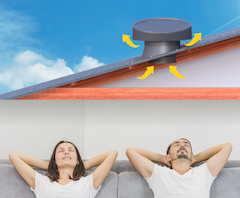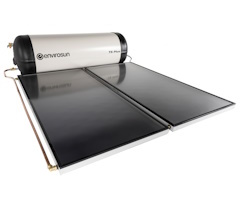Daylight saving has a long and highly debated history, with Australians divided depending on their graphical location when arguing the pros and cons. For some of us, the extended daylight hours are a blessing, enabling longer leisure and outdoor time. However, for others, daylight saving can be an inconvenience that hinders routine and interrupts circadian rhythms.
But no matter your personal viewpoint on the issue, ultimately, the intention of daylight saving is to do just that: save daylight and, in turn, reduce energy consumption. The jury is still out on the usefulness of the concept, however, some studies have shown that in today’s landscape, daylight saving may no longer be having the impact on energy consumption that was originally envisioned.
Origins
Tasmania was the first state in Australia to observe Daylight Saving Time (DST) in 1916. The concept was initially introduced in Germany during WWI with the goal of reducing the use of artificial light to save fuel. Other countries, including Australia, soon followed and used DST until the end of the war. With WWII, DST was once again introduced as a fuel-saving measure, where it was used from 1942 to 1944.
It took another 20 years until DST was implemented again. Once more, Tasmania was the first state to readopt daylight saving in 1967 while experiencing a severe water shortage. The drought had a dramatic impact on the state’s water storage resulting in power rationing. The state has continued with the process ever since.
Most other states joined Tasmania in reintroducing DST in 1971, however, the Northern Territory outright rejected the idea. Queensland trialled DST during 1971 and again between 1989 and 1992, along with Western Australia, who tried it out between 2006 and 2009 before both states abandoned the concept completely.
Saving Power?
Few studies have been conducted that are specific to Australia. However, one notable research experiment in 2007 investigated the effects of DST during the Sydney Olympic Games in 2000. The Australian government extended DST by two months to facilitate the Games, moving the start date to August rather than October. The report found that, when comparing this period with previous years, DST reduced power usage in the evening, but it actually increased demand in the morning. The overall outcome of this particular study showed that DST, in fact, failed to reduce electricity demand.
Changes in lifestyle and technology have also impacted the effectiveness of DST. While there may be longer daylight hours, for those warmer parts of the country, this requires longer periods of cooling – in particular, air conditioning. It’s a considerable convenience, for sure, but also a significant drain on energy consumption. So, where there may have been light-saving benefits during the early days of DST, this is now overshadowed by power-hungry air conditioning.
While the positive effects of daylight saving on energy consumption overall may be difficult to quantify, for you specifically, it really comes down to your individual circumstances if DST is of benefit to you. Where you are located, the weather, and your personal power usage, especially when it comes to air conditioning, will all impact your energy consumption during DST.
Conclusion
The debate regarding DST and the benefits, or lack thereof, rages on with no foreseeable end. However, there is one definitive way to ensure you make the most out of daylight saving and harness the extended hours of the sun: Solar.
Solar produces clean, free energy directly from the sun. A typical household solar system in Australia can reduce your electricity bill by, on average, around $2,000 each year. SolarBright is dedicated to helping you achieve these savings.
From solar panels and power, solar hot water, and solar battery storage, SolarBright provides solar solutions which help you take advantage of daylight saving and ultimately save you money in power costs.
SolarBright also offers a huge range of skylights and ventilation products designed to maximise the comfort and energy efficiency of your home or office.
Contact the expert team at SolarBright to discover more about how solar can help you save on energy costs in your home. Family-owned, this dynamic solar and skylight business has been brightening the homes of Australian families for close to 15 years, helping thousands reduce or eliminate their power bills with their range of energy-saving solar products.
Get in touch today to arrange a free consultation and start experiencing the power-saving benefits of solar with SolarBright.
Read Also:
Creating The Greenest Home On The Block
Solar Batteries and Other Ways to Make the Most of Your Solar Panels





